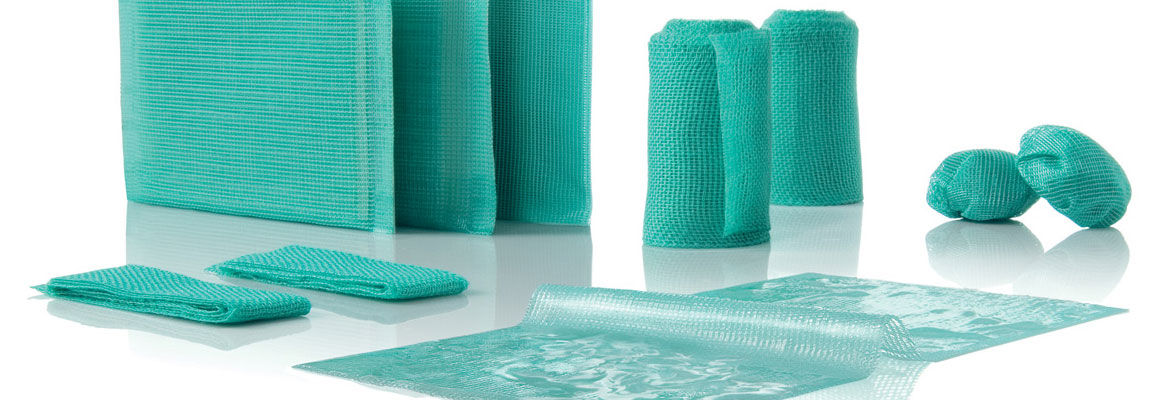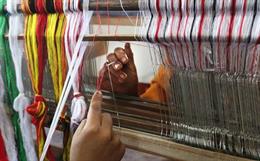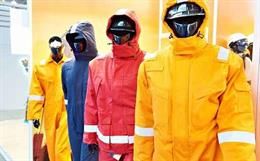Abstract:
The use of particles extremely small in sizethan cells -- is emerging as a powerful complement in Bio-Nanotechnology.Silver is one of the most famous antimicrobial substances. Nano-technologymakes it possible to expand the surface area of Silver particles markedly. Thesurface area is directly proportion to the drug action.
The antimicrobial activity of Silver ion is welldefined in nano science. Anti-microbial mechanisms of Nanosilver are differentaccording to the species of bacteria. Silver ion rapidly kills microbes byblocking the cell respiration pathway or breaking outer cell wall. The speed ofaction is almost instantaneous once the Silver reaches the microbe. Theefficacy of microbe killing is based not only on the amount of Silver ion present, but likely also the presence of other Silver radicals generated by a Silver releasing product.
Key words: Nano- silver, Anti-microbial, Woundcareproduct.
Nano-silver is extensively used in wound careproduct because of its potent anti-microbial effect. Nano-silver isincorporated in suitable textile and used for woundcare. In combination ofNano-silver and textile, Nano-silver provides an anti-microbial protection andtextile acts as an external barrier.
2.0 HistoricalPerspective
In ancient times, the first metals discoveredand used were Gold, Silver and Copper. Silver have been generally recognizedfor centuries for its medicinal purposes. Silver has been used as a medicineand preservative by many cultures throughout history. The Greeks and othersused silver vessels for water and other liquids to keep them fresh.
| S.No. | Culture | Application |
| 1. | The Greeks | Silver vessels to keep water and other liquids fresh. |
| 2. | Roman | stored wine in Silver urns to prevent spoilage |
| 3. | Egyptian | The reference of Silver is mentioned in ancient Egyptian writings |
| 4. | Chinese | Silver chopsticks |
| 5. | Indian | Silver is used in small amounts as a tonic, elixir or rejuvenative agent for patients debilitated by age or disease. |
3.0 Materials:
3.1 Nano-silver: Nano-technology is offering silver nanopowders with mean particle sizes available from 25 to 30 nm. The particles are characterized by spherical morphology and strong crystalline.
The x-ray diffraction (XRD), transmission electron microscopy (TEM), and BET surface area analysis are the characterization techniques. TEM will show the shape, and size distribution of nano particles.
SEM images of treated fabrics will indicate silver Nano- particles dispersed on the surfaces of specimens. ICP-MS will inform the residual concentration of silver particles on fabrics.
For the characterization, differential scanning calorimetry (DSC) and wide-angle X-ray diffractometer (WAXD) will be used for analysis of structure, thermal and crystallization behavior of the fibers.
3.2 Comparisons of Silver Content 3
|
Silver Content of Dressings |
|
|
Proprietary Name |
Ag content (mg/100cm2) |
|
Silverlon |
546 |
|
Calgitrol Ag |
141 |
|
Acticoat |
105 |
|
Contreet Foam |
85 |
|
Contreet Hydrocolloid |
32 |
|
Aquacel Ag |
8.3 |
|
SilvaSorb |
5.3 |
|
Actisorb Silver 220 |
2.7 |
3.3 Substrate material:
1. Cotton
2. Viscose
3. Silk
4. Polyamide fiber
5. Hydrogel
6. Hydrophilic polyurethane foam
7. Alginates
The selection of suitable substrate depends upon many factors like designing of woundcare products, type of wound, target population, water vapor permeability, air permeability, thickness, area density, bulk density, bursting strength, abrasion resistance and fabric strength.
4. Methods
4.1 Activity of Nano-silver:
Silver has been known for his a potential anti-microbial action. It is active against Gram positive bacteria and Gram- negative bacteria. The silver release is also effective against fungi including Candida and Aspergillus. The minimum inhibitory concentrations (MIC), minimum bactericidal concentrations (MBC), zone of inhibition, and killing curves are import to determine with clinically relevant bacteria.
Recently its beneficial effect on wound comes in picture because of Nanotechnology. Nanotechnology amplifies surface of Silver. Drug action is directly proportion to the surface of drug. Recent clinical data with the use of a pure silver delivery system, which can maintain both anti-microbial control and provide an ideal wound healing environment, have been very positive, especially when compared to the use of the topical antibiotic cream, silver sulfadiazine (or antibiotic solutions).
An important concern in the design of new dressings is their ability to fight microbial infection. Many dressings now exploit 'bioactive' properties to promote healing and control infection. These include the now well-known sustained release iodine and silver dressings (e.g. Iodosorb, Actisorb Silver 220). Actisorb Plus is an activated charcoal cloth impregnated with silver. It is reported to absorb bacteria, which are then inactivated by the silver4.
The antimicrobial activity of silver depends upon the silver ions and other silver radicals generated by a silver releasing product. The action of silver ion is well defined. Antimicrobial mechanisms of nanosilver were different according to the species of bacteria. From the result, Silver nano particles will be available as a good antibiotic alternative.
The proteomic data revealed that a short exposure of E. coli cells to antibacterial concentrations of nano-Ag resulted in an accumulation of envelope protein precursors, indicative of the dissipation of proton motive force. Consistent with these proteomic findings, nano-Ag was shown to destabilize the outer membrane, collapse the plasma membrane potential and deplete the levels of intracellular ATP. 5
4.2 Wound Healing activity of Nano-silver 6:
The anti-inflammatory effect of Silver ion on a wound is well defined since longtime. Recently with the new concepts on wound healing, the major focus of wound healing has been on the relationship between tissue destruction by a group of collagenase enzymes known as METALLOPROTEINASES (MMP) and tissue synthesis which is stimulated by growth factors.
Current Concepts
- An excess of MMP activity has been reported in burn wounds and in chronic wounds.
- Action of the MMPs is dependent on the availability of free Zinc.
- Silver decreases surface Zinc which could decrease excess MMP activity and increasing healing rate.
- Recent findings indicate that silver decreases MMP activity.
- The fact that silver increases wound surface calcium should stimulate epithelialization.
A quantitative assay can be done by using collagenase MMP-1, MMP-8; and MMP-13). As MMP-2 and MMP-9 have related activities (gelatinase), they are anticipated to behave similarly and produce results similar to those obtained for the collagenase tested.
Some study also revealed that the sustained-release silver foam dressing showed statistically significant advantages in odour reduction and pain relief as well as the clinical ease of use of the dressing.
4.3 Methodology of incorporation Nano-silver into fabric:
Silver can be applied simply and quickly by immersion or soaking in a bath, by vaporization, or by adding to a wash after the rinse cycle. The different binders are used for binding Silver into the fabric like PVA.
Some of methods of incorporating nano-silver are mentioned below
Traditional coating technologies like padding, spraying
Surface treatments by silver in hydrogel.
Silver ion incorporation into material compounds.
Surface-engineered nanostructures like Autocatalytic/Electroless, Vapor Deposition, and Ionic Plasma Deposition (IPD).
4.4 Designing of Advance wound care product:
All new woundcare products are multilayer. The wound contact layer should be non adhesive. Nano-silver should be incorporated in wound contact layer. Middle layers should be absorbing layer. It should be absorbs the wound exudates. The outer layer protects wound from the external environment.
Nano silver base woundcare products are an advanced active wound care product. It is advance because it covers, protects, and provides moist environment for wound healing. It is active woundcare products because it stimulates wound healing.
5.0 Evaluation of Nano-silver based woundcare product:
The selection and timing of a particular test will differ from one product to another product. Evaluation of Woundcare product is mention below
1. Performance tests
2. Microbiological tests
3. Silver release studies
4. In-vitro and in vivo tests
5. Clinical testing
1. Performance tests:
1. Water vapor permeability
2. Air permeability
3. Rate of absorption
4. Total absorption capacity
5. Water repellency
6. Sinking time
7. Wicking rate
8. Drain test
9. Abrasion test
2. Microbiological tests:
A) American Association of Textile Chemists and Colorists (AATCC)
- Method 100-1998 Antibacterial finishes on textile materials.
- Method 147-1998 Antibacterial activity assessment of textile materials: parallel streak method
B) American Society for Testing Materials (ASTM)
1. E2149-01 Standard Test Method for Determining the Antimicrobial Activity of Immobilized Antimicrobial Agents under Dynamic Contact Conditions
C) Government, corporate and other test methods
2. JIS L1902-1998, Testing method for antibacterial activity of textiles.
3. Anti-algal assessment on textiles and polymers
4. Bacterial Identification
5. Minimum Inhibitory Concentrations (MIC)
D) Other Test methods
- USP Antimicrobial Preservative Effectiveness
- Dow Corning Corporate Test Method 0923
- Kirby Bauer Standard Antimicrobial Susceptibility
- Silver Ion Release Studies:
Ionic Silver Release from Silver Woundcare product will be measure by inductively coupled plasma spectroscopy released in tryptic soy broth at 37oC.
4. In-vitro and in vivo study:
The selection and timing of a particular in-vitro and in-vivo test will depends upon the aim and objective of woundcare product. For example, wound healing, It will be carried on animals like albino rats to know the wound healing rate and other parameters according to designing of the woundcare product. Using a modified Walker-Mason technique, burn wounds will be induced on rats by exposing an area of dorsal skin to boiling water for 12 seconds. Burn sites will be evaluated according to objectives of study.
Other Testing
1)Preliminary screening of raw materials, i.e. cytotoxicity, hemolysis.
2) Biocompatibility tests of woundcare components, per the FDA Modified ISO
Matrix.
3) Release and audit testing, e.g., Bacterial Endotoxin Testing.
Pyrogen Test (USP <151>)
Bacterial Endotoxin Test (USP<85>)
Safety Test, General (USP <85>)
Safety Test, Biologics (USP <88>)
Systemic Injection Test (USP <88>/ISO 10993-11)
Abnormal Toxicity
Intracutaneous Reactivity Test (USP <88>/ISO 10993-10)
Implantation Test - 1, 4, 12, 26, 52 Weeks (USP <88>/ISO 10993-6)
Histology of Implant Sites (ISO 10993-6)
Primary Skin Irritation (ISO 10993-10)
Skin Sensitization, Maximization Method (ISO 10993-10)
Skin Sensitization, Closed Patch Test (ISO 10993-10)
Biological Reactivity Tests, in vivo (USP<88>) {Class Plastics Testing}
Hemocompatibility testing: (ISO 10993-4)
Mutagenicity testing (ISO 10993-3)
Mucosal irritation testing: (ISO 10993-10)
Specialized Test like Antibody Production test
5. Clinical Trial-
Design-
Single /Double blind
Parallel or cross design
Randomized control Trial (RCT)
Placebo control
Parameter for wound assessment-
The parameters for wound assessment is mentioned bellow
- Wound healing
- Comfort
- Pain
- Anti-microbial effect
- Ease for use
1. Wound healing:
The main parameter of wound or chronic ulcer is wound healing rate. The assessment of wound healing is often subjective so there is a need to develop a standard methodology to enable accurate comparisons between treatment outcomes and the accumulation of a reliable body.
Wound site measurement techniques
The purpose of any wound measurement is to monitor the progress of healing through changes in the length, width, area or volume of a wound. This can be done using the following techniques:
- Simple measurement by tapes or ruler
- Wound tracing
- A Kundin gauge
- Moulds
- Scaled photographs
- Planimetrics
- Computerized stereophotogrammetry
2. Comfort- It will evaluate all performance of woundcare product during nursing.
3. Pain: Wound pain was rated by the patient using a visual analog scale during dressing removal, application, and 2 hours after application.
4. Antimicrobial effectiveness: Antimicrobial effectiveness can be evaluated by quantitative burn wound biopsies performed before and at the end of treatment.
5. Ease for use: Ease of use was rated by the nurse providing wound care.
6.0 Warning
It should not be used on patients with a known sensitivity to silver. In addition, silver has repeatedly been shown to be non-toxic to human cells. Toxicity occurs from the complexes used to deliver silver such as nitrate and sulfadiazine.
7.0 Regulations-
For Nano-silver based woundcare products, FDA Marketing Clearances is required
1. US FDA-
Section 510(k) of the Food, Drug and Cosmetic Act requires those device manufacturers who must register to notify FDA, at least 90 days in advance, of their intent to market a medical device. This is known as Premarket Notification - also called PMN or 510(k).
2. FDA, India-
We have to reregister the Nano-silver based woundcare product for marketing.
More details, you can log on http://cdsco.nic.in
8.0 Conclusion:
Nano-silver based woundcare product falls under the Non implantable materials classification of medical textile. It is the ideal woundcare product .It combat with infections and also promotes wound healing by decreasing MMP activity and increasing wound surface calcium that stimulate epithelialization. Silver has constantly been shown to be non-toxic to human cells.
Reference:
1. Antimicrobial fabrics coated with nano-sized silver salt crystals ,d. Tessier, i. Radu and m. Filteau center for textile technologies, ca
2. The royal society and the royal academy of engineering (2004)
3. Silver Dressing Comparisons of Silver Content of various name brands of Silver Dressings. (MRSA and the use of silver dressings: overcoming bacterial resistance) product study done by Silverlon.
4. Furr JR, Russell AD, Turner TD, Andrews A. Antibacterial activity of Actisorb Plus, Actisorb and silver nitrate. J Hosp Infect 1994; 27(3): 201-8.
5.
Proteomic
analysis of the mode of antibacterial action of silver nanoparticles.,
Lok
CN, Ho
CM, Chen R, He
QY, Yu
WY, Sun
H, Tam
PK, Chiu
JF, Che
CM.,Open Laboratory of Chemical Biology of the Institute of Molecular
Technology for Drug Discovery and Synthesis, The University of Hong Kong,
Pokfulam, Hong Kong, China.
6. What are the biologic properties of silver related to wound infection control and healing- burn sugery.org
To read more articles on Textile, Industry, Technical Textile, Dyes & Chemicals, Machinery, Fashion, Apparel, Technology, Retail, Leather, Footwear & Jewellery, Software and General please visit http://articles.fibre2fashion.com
To promote your company, product and services via promotional article, follow
this link: http://www.fibre2fashion.com/services/article-writing-service/content-promotion-services.asp







